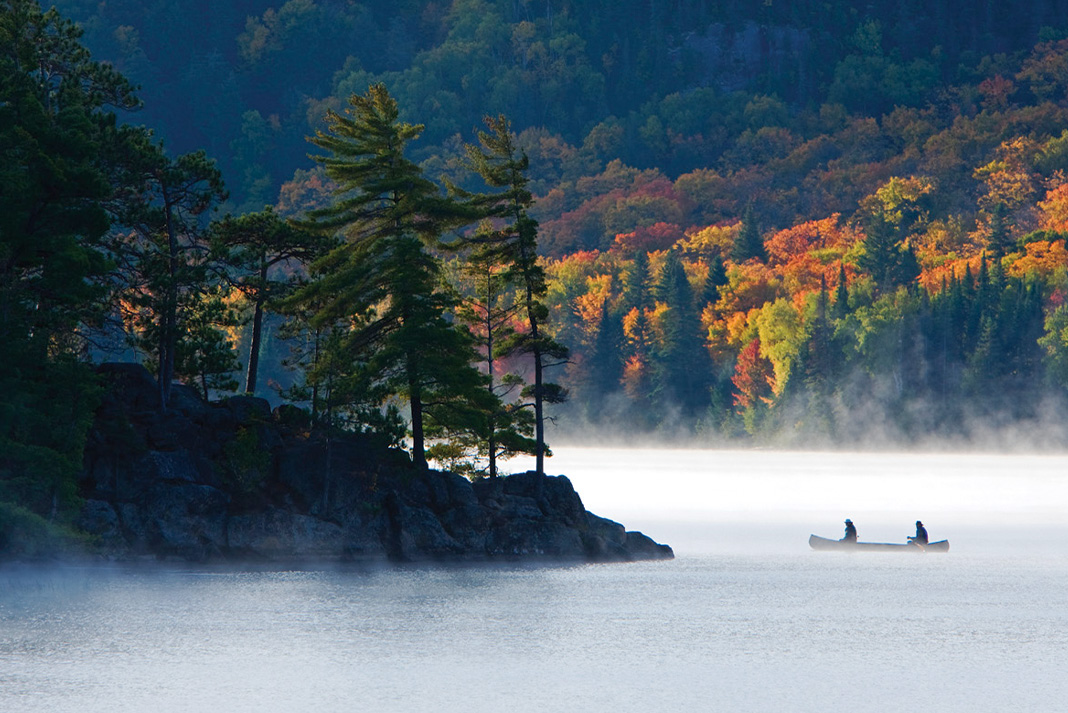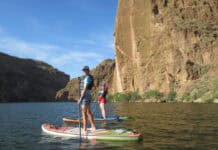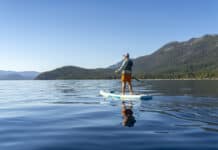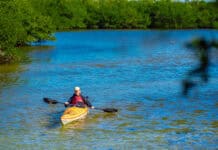Robin Tapley is a wildlife researcher and photographer who grew up on the edge of Ontario’s Algonquin Park. He has traveled extensively through the park’s interior as a wilderness guide and biologist.
An internationally renowned canoeing destination, Algonquin Provincial Park is famed for its vast maple hills, rocky ridges and thousands of remote wind-swept lakes. About the size of Rhode Island, Ontario’s oldest provincial park has 29 access points located around its periphery, offering access to the remote and rugged Shield interior. Meanwhile, the 56-kilometer-long Highway 60 corridor cuts through the south, making for easy access to car campgrounds and 14 hiking trails, as well as naturalist guided interpretive programs, a visitor’s center and museum.
Algonquin’s expanse would take a lifetime to properly explore. From its modest peaks, a carpet of green teaming with wildlife stretches far into the horizon. I grew up on the edge of the park and have paddled, camped and hiked here for most of my life, yet I still find many surprises within its borders.
Algonquin offers something special during each season: Spring provides great birding and wildlife watching, while summer offers the opportunity for crystal clear, freshwater swims. Tag along with naturalists to listen to wolf packs howl in late August. Fall is incredibly popular as the colors reach their peak and explorers paddle and hike in an explosion of yellows, reds and oranges.

TRIPS
If you have a half-day select a couple of short hikes along the main corridor of the park. Don’t miss the Spruce Bog Trail, which meanders through a unique habitat—you’re likely to see spruce grouse, red-breasted nuthatches, gray jays and brown creepers.
If you have a day head to Lake Opeongo via access point #11. Pack a lunch and venture up the lake via water taxi to the headwaters of Hailstorm Creek. This wildlife zone is accessed only by canoe and is one of the best wilderness observing areas for moose, otters, beavers, great blue herons and other bird life.
If you have a weekend paddle to a remote site on quiet and sandy Booth Lake. There are two short portages on the way, and you can go from car to campsite in just a couple hours. Alternately, venture to the park’s quiet eastern side and explore the hallowed halls of the Barron Canyon. The park is busy on summer weekends so reserve a campsite in advance.
If you have a week venture into the park’s northern reaches from Kiosk access point. In this area you can paddle for days without seeing another soul, and there are endless loop possibilities. Or, challenge yourself on the gorgeous Lavielle and Dickson lakes circuit—it’s more centrally located, but a five-kilometer portage keeps all but the hardiest trippers away.
STATS
SUMMER HIGH
Warm days last from mid-May to mid-September with an average daily high above 19°C.
WILDLIFE
Moose, otter, beavers, wolves, black bear, red fox, common loon and many other bird species.
BEST EATS
Henrietta’s Pine Bakery in Dwight, on the western edge of the park. Great coffee and famous sticky buns.
DIVERSION
Near the southern edge of the park, Haliburton Forest’s Wolf Centre offers up-close viewing of the elusive canis lupus.
OUTFITTERS
Algonquin Outfitters (www. algonquinoutfitters.com) Algonquin Bound (www. algonquinbound.com) and Algonquin Basecamp (www. algonquinbasecamp.ca) are three of many boat and gear rentals.
MUST-HAVE
Camera, hiking boots and Jeff’s Algonquin Provincial Park Map.

Subscribe to Paddling Magazine and get 25 years of digital magazine archives including our legacy titles: Rapid, Adventure Kayak and Canoeroots.








